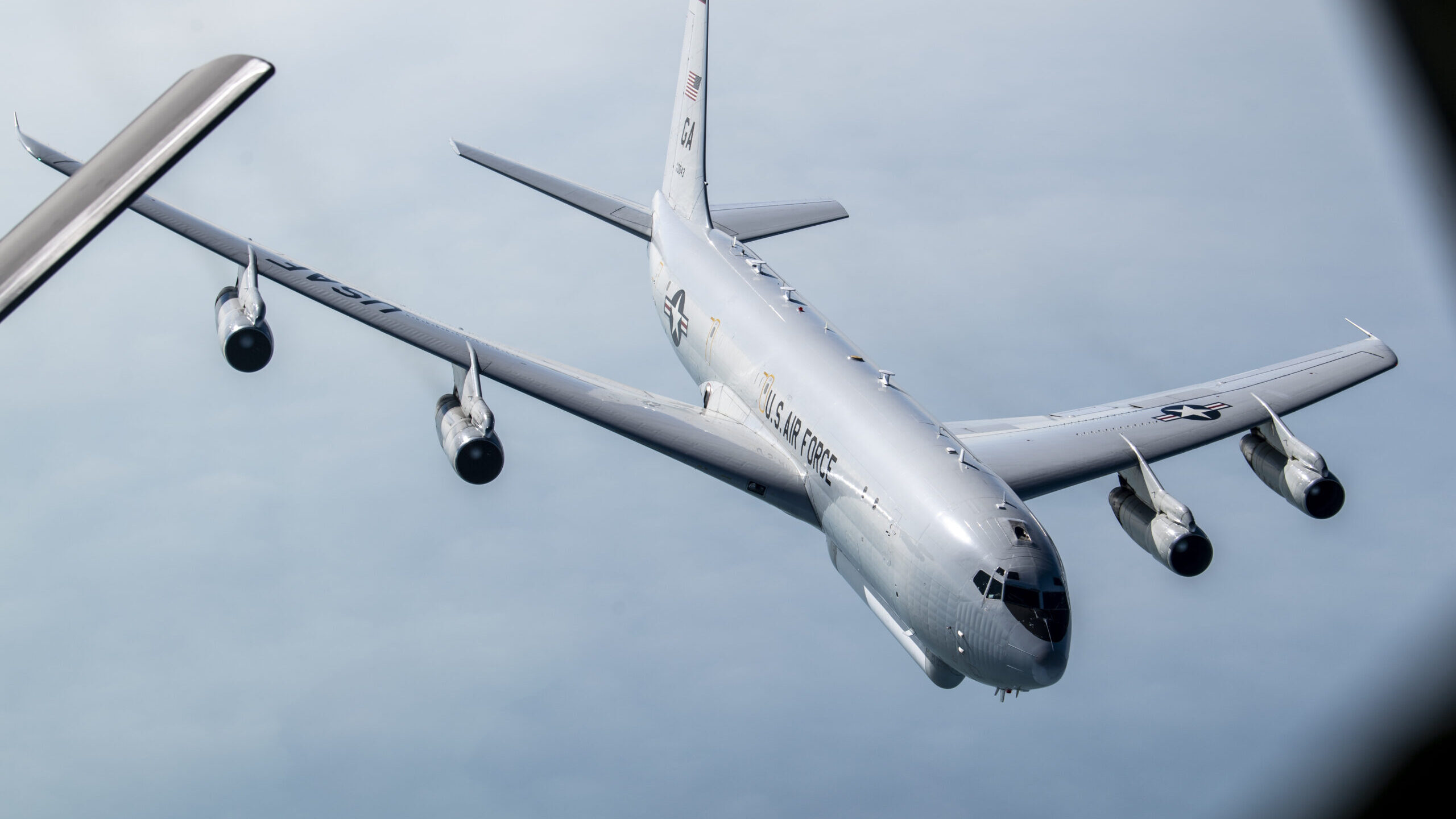
A U.S. Air Force E-8C Joint Surveillance Target Attack Radar System pulls away from a U.S. Air Force KC-135 Stratotanker after completing aerial refueling over the U.S. Central Command area of responsibility Oct. 5, 2020. (U.S. Air Force photo by Senior Airman Duncan C. Bevan)
WASHINGTON — The Space Force’s fiscal 2024 budget requests for the first time funding for research and development of satellite payloads designed to detect and track moving targets on the ground — with the service asking for $243 million in FY24, and slightly more than $1.2 billion through FY28, according to the service’s just-released detailed budget documents [PDF].
The new program, called Long Range Kill Chains, will take over at least part of the mission performed in the past by the Air Force’s E-8C Joint Surveillance Target Attack Radar System aircraft, set to be retired this year. Funded under the service’s research, development, test & evaluation budget program element PE 1203154SF, the program has two pieces: the ground moving target indicator (GMTI) sensor, also called “MTI;” and “auxiliary payloads” being developed with the National Reconnaissance Office (NRO).
The budget documents show that the Space Force intends to “develop and field” both the MTI sensor and auxiliary payloads by the end of 2024, although there is continuing funding through the five-year future defense program for unexplained activities.
The effort to develop a classified satellite system for GMTI was first revealed in 2021 by then-Space Force chief, Gen. Jay Raymond. The FY24 funding plans are a result of an analysis of alternatives completed by the Space Warfighting Analysis Center (SWAC) last September, with the agreement of the National Reconnaissance Office that builds and operates US spy satellites.
“Space-based GMTI system will provide actionable information on adversary surface targets to the warfighter through the Advanced Battle Management System (ABMS) as an integral part of Joint All-Domain Command and Control (JADC2) concept. The USSF is working with the Air Force and the Intelligence Community (IC) in a complementary way to design, develop, and deploy space-based GMTI systems,” the budget documents explain.
According to the documents, the space-based GMTI system will only replace a “portion” of the JTARS mission for tracking surface targets in heavily defended adversary territory — leaving open what exactly that means and what other systems the Air Force may require to fulfill the entire mission.
“GMTI is not a one-for-one swap for the aging E-8 JSTARS that is about to retire, but rather an evolved weapon system that serves as the next generation moving target indicator for the warfighter. GMTI will be critical to tracking surface targets in Competition, Crisis, and Conflict environments. This will be accomplished from space, instead of from JSTARS aircraft which will not be capable of operating in a contested/non-permissive environment,” the budget documents state.
The idea is to integrate targeting data from the space-based GMTI sensors into the “secure cloud environment” of ABMS. According to the Air Force’s own budget documents [PDF], ABMS (and its 50-some sub-projects) is part of what the overarching Department of the Air Force responsible for both military services is now calling the DAF Battle Network. This network will substantiate JADC2 by linking Air Force and Space Force sensors, battle management command and control systems, and weapons.






















